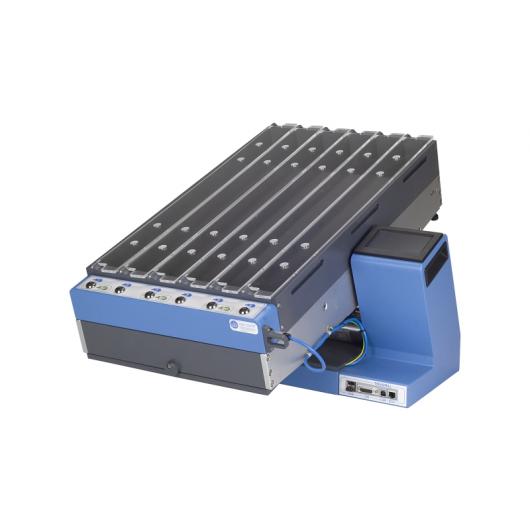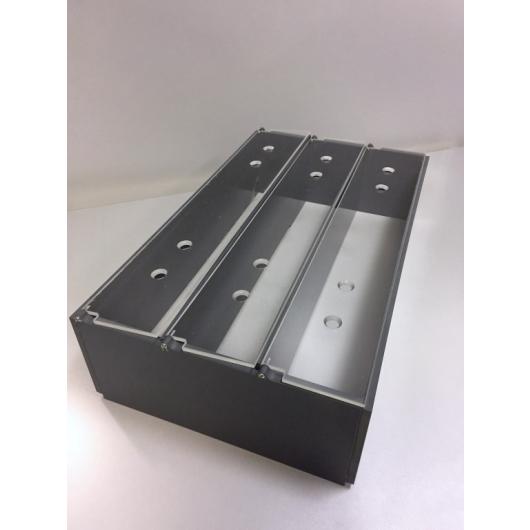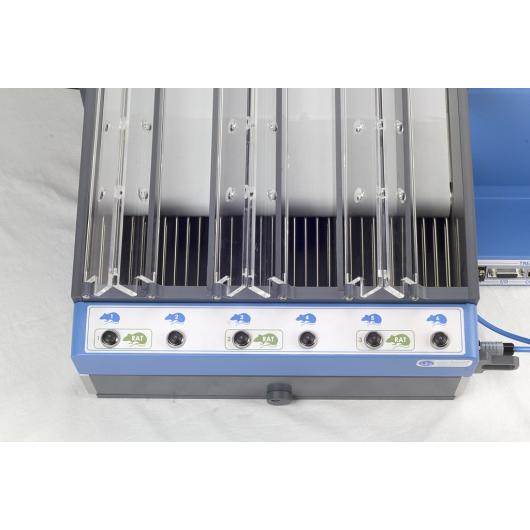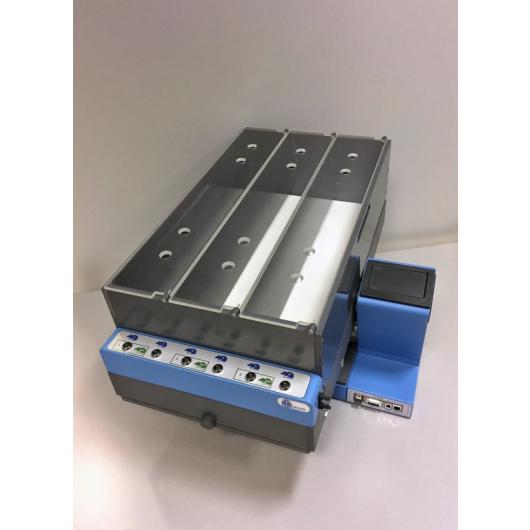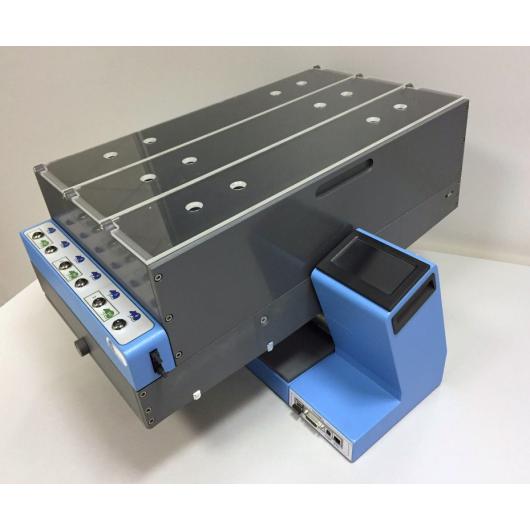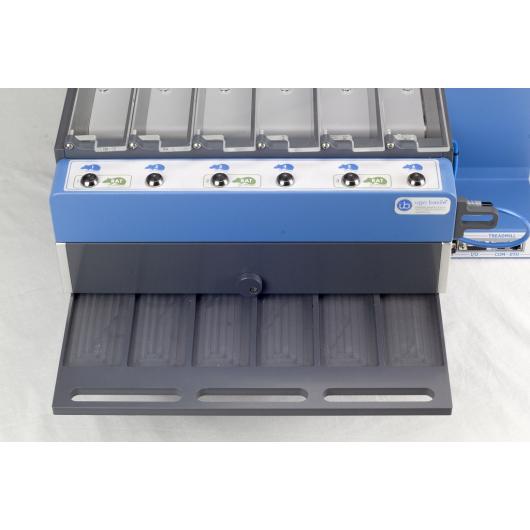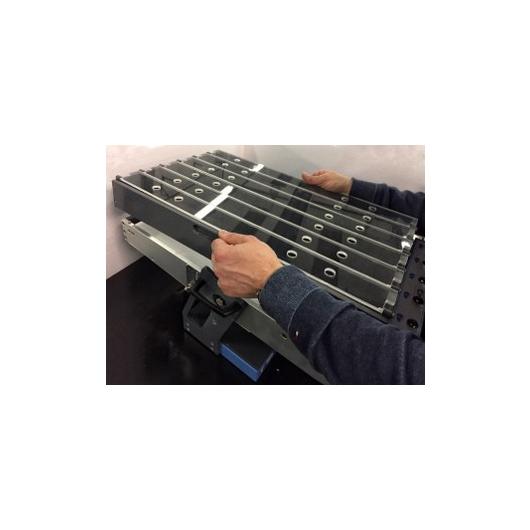










Rodent Treadmill NG with interchangeable lane assembly for rats or mice - demo system sale
Ugo Basile's original TREADMILL for rats and mice. The same device is suitable for tests on either rats or mice. Shock option incorporated in all models. We sale post-demo system. For more information contact us at info@animalab.eu.
Features
- Same device to test rats & mice
- Slope: positive (uphill) or negative (downhill), from -25 to +25°, in 5° steps
- Shock: from 0 to 2mA (in 0.1mA steps), included
- Controls: 4”3 touch-screen to set and monitor the test
Benefits
- Modes: constant, accelerating, custom ramps
- Speed: from 3 to 100m/min, in steps of 1m/min amps
- Detection: via incorporated electronic circuit automatically detects speed & absolute and relative distances
- X-PAD Software: brand new, user-friendly version, to set the experiment and manage the results
Application
“Exercise is a multifactorial activity that affects virtually every organ and tissue in the body. Not only does exercise contribute many health benefits, but lack of exercise is im-plicated in many chronic health problems.
As evidence continues to accumulate concerning the impressive range of health benefits that exercise confers, biomedical researchers have increasingly become interested in conducting systematic studies of exercise to further define those benefits”.
Fatigue is a common and frequently poorly-understood symptom in many diseases and disorders. New preclinical assays of fatigue may help to improve current understanding of fatigue-like behavior in rodents and many other exercise paradigms and study future treatment of fatigue.
Treadmills are rolling belts (tapis-roulants) with presettable speed and adjustable uphill and downhill inclination (slope), enabling forced exercise training and accurate testing of fatigue in lab animals.
“Treadmill running has been used extensively over the past decades to study behavioral, physiological, biochemical, and, more recently, molecular responses to both acute exer-cise stress and chronic exercise training. Although investigators have used a wide variety of species (…) for treadmill running studies, they have used rodents in most of these studies.
Treadmill running has the distinct advantage over other forms of exercise, including spontaneous wheel running and swimming, that the total amount of external work done by the rat can be easily calculated.
Treadmill running may be construed as a form of forced exercise in which the animal does not have a choice of participating in the activity. Because of this, noxious stimuli (e.g., electric shock and bursts of high-pressure air) may be needed to motivate the animals to exercise”
(from Resource Book for the Design of Animal Exercise Protocols, APS, Feb 2006)
- Exercise Ameliorates Motor Deficits and Improves Dopaminergic Functions in the Rat Hemi-Parkinson's Model YH Chen, TT Kuo, JH Kao, EYK Huang, TH Hsieh… - Scientific Reports, 2018
Method paper
- American Physiological Society: “Resource Book for the Design of Animal Exercise Protocols” February 2006
- O.J. Kemi et alia: “Intensity-Controlled Treadmill Running in Mice: Cardiacand Skeletal Muscle Hypertrophy” J. Appl. Physiol. 93: 1301-1309, 2002
- X.Q. Wang & G.W. Wang: “Effects of Treadmill Exercise Intensity on Spatial Working Memory and Long-Term Memory in Rats” Life Sciences 149: 96-103, 2016
- M. Shinozaki et alia: “Combined Treatment With Chondroitinase ABC and Treadmillrehabilitation for Chronic Severe Spinal Cord Injury in Adult Rats” Neuroscience Res 113: 37-47, 2016

